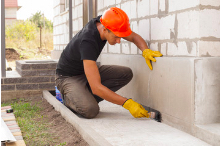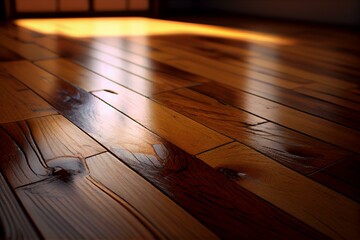 If you have outdoor concrete in your yard, you must maintain it properly. Taking care of your concrete can extend its life and avoid problems. Proper curing and sealing are key to ensuring your concrete lasts as long as possible. Here are three ways to maintain concrete and extend its life. Read on to find out more! Also, remember that proper maintenance can save you a lot of money! Listed below are concrete maintenance tips for the outdoor area of your home.
If you have outdoor concrete in your yard, you must maintain it properly. Taking care of your concrete can extend its life and avoid problems. Proper curing and sealing are key to ensuring your concrete lasts as long as possible. Here are three ways to maintain concrete and extend its life. Read on to find out more! Also, remember that proper maintenance can save you a lot of money! Listed below are concrete maintenance tips for the outdoor area of your home.
There are several problems associated with concrete maintenance. While cracking and scaling can be remedied in small areas, if you’re unsure how to fix them, consider hiring professional Concrete Contractors Dallas TX. Cracking is often a symptom of poor construction, but you can also fix a larger problem using a power washer. Besides, sealing concrete surfaces is also a good way to prevent further damage.
While concrete is one of the most durable building materials, it can still suffer from damage from time and weather. Cracks can affect a concrete slab for years, so it’s important to address them as soon as you notice them. Repairing small cracks is an easy process that can be accomplished with simple concrete repair compounds from your local hardware store. Big cracks, however, are more problematic and require more professional expertise. Fortunately, a few concrete repair services can help you maintain your concrete surface.
Concrete cracking is a common issue for buildings, and even small cracks can lead to larger issues in the future. If left untreated, water can seep inside the concrete and cause it to expand. In cold weather, the water may freeze and cause further damage. Preventing small cracks is the best way to minimize concrete maintenance issues. Keeping concrete in good condition will prevent major problems from occurring. In addition, regular inspections of concrete slabs will help you detect structural issues before they become serious.
Hairline cracks in a concrete slab indicate that your concrete is not correctly installed. These cracks should be treated immediately. The underlying cracks may be a precursor to bigger problems such as spalling, which involves the separation of large chunks of concrete. This happens when a layer of concrete separates from the main structure, often during the freezing and thawing cycle. Whether a foundation crack or a surface crack, spalling is a symptom of a serious problem.
Repair options
One of the best options for repair is high-quality concrete. Polymer-modified concrete is a mix of portland cement, and aggregate with a polymer added. This material has high adhesion to overhead and vertical surfaces and can easily flow into cracks and forms. The added polymer allows the concrete to reach full strength quickly. However, many of these materials have disadvantages, including poor bond strength.
Thin repairs require a minimum of one-half to one-sixth inch thickness and cannot incorporate existing reinforcing steel. They require a professional engineer to perform the job. Repairs of this nature will require additional reinforcement, including bolts and anchors. Thin repairs can be either epoxy-based or Portland cement mortar. Other types of concrete repair materials are available. If you’re unsure which one is best for your application, consider a few tips.
One method of concrete repair is patching. Patch kits can be purchased at a local hardware store or online. Make sure to follow the directions on the patch kit. You may also want to consider caulking cracks, preventing debris from getting in between. Another option is applying color stains to hide cracks. Color stains can also be applied to the repaired surface, giving it a fresh appearance. If you don’t want to spend a fortune on repair, consider using a color-staining system instead.
Another method of concrete repair is epoxy injection. This method is used for cracks that are smaller than 0.002 inches. In addition, it is very effective in sealing water leaks and structurally bonding concrete cracks. The process requires a highly skilled contractor. Before applying epoxy injection, it is necessary to identify the root cause of the crack. Once you have identified the root cause, you can use the right epoxy. It is essential to note that this method has certain disadvantages, and you should discuss them with a qualified contractor before performing this.
Once you have identified the cause of the problem, the next step is to assess the damage to the concrete surface. Then, determine what type of repairs should be applied and the desired concrete quality. Determine whether the repair method is appropriate for the structure and the time needed to complete it. You may opt for a more permanent solution if the repair is too expensive. But be sure to follow the recommendations of the contractor to avoid damaging the structure further.
Preventive maintenance
Preventive maintenance treatments are an important component of an effective pavement maintenance program. Preventive maintenance applications are best performed before pavements begin to exhibit distress. If pavements have already undergone significant distress, prevention may not be effective and need to be reconstructed. Among the preventive maintenance applications are crack seal, which is applied directly into cracks, and fog seal, a bitumen material that enriches the pavement’s surface and is applied to the entire surface to prevent the loss of aggregates.
The most common cause of deteriorated bridges is the loss of substructure stability caused by scour and streambed migration. Undermining of foundations/footers results from water action eroding the supporting soil and can be visually detected early on. Many types of bridges and culverts are listed in the Preventive Maintenance document and discuss the most common types of these structures. These steps can prevent concrete deterioration and reduce costly repairs or replacements.
Another common reason for deteriorating structures is various factors, including traffic vibration, deicing chemicals, and the environment. While concrete cancer can be prevented using best practices, these preventive maintenance methods are not enough to prevent this from happening. In addition to preventing concrete cancer, preventing this condition requires good design and high-quality construction. The key is to ensure quality assurance during construction. Considerable attention must be paid to the concrete cover and homogeneity.
The use of proprietary epoxy formulas and products to preserve concrete is recommended. They are more effective than the old linseed oil-turpentine-paint preparations. The application of preventive maintenance products should be performed when concrete begins to show signs of deterioration. Cracking, surface scaling, and shrinkage are all signs that the concrete needs preventive maintenance treatment. Applying preventive maintenance to concrete surfaces early can postpone costly repairs until the problem is more advanced.
Performing preventive maintenance on your concrete assets is essential to their longevity. It is not a waste of resources. It saves money and time. It also improves the appearance of concrete structures. The benefits of preventive maintenance can be huge. For example, regular inspections can prevent costly repairs and save energy. In addition, preventive maintenance can improve the lifespan of concrete and ensure its structural integrity. It is also the most cost-effective method of maintaining substantial assets.
Cost of repairs
Unlike other construction materials, concrete is not indestructible. However, it can crumble or crack over time if not properly maintained. Homeowners can repair minor cracks themselves, but structural damage is best left to professional contractors. Repairing concrete is difficult and heavy. It requires experience and expertise. Here are some things to consider when estimating the cost of repairs for concrete maintenance. Keep these tips in mind for a successful job.
A professional handyperson will charge you $119 for small cracks and holes and around $70 for larger ones. These costs include materials, labor, and his time. To repair a crack, he will remove any loose materials, clean up the area, and apply a crack filler caulk in a continuous bead. If the crack or hole is larger and has deeper depressions, he will use a cold chisel to open it, allowing the patching material to spread more evenly over the area. Finally, he may use a backer rod to fill the deeper depressions.
In addition to repair costs, the type and extent of the concrete crack can affect the cost. Cracks in concrete that are too deep or obstruct the foundation may require professional intervention. For example, if the cracks are more than one-eighth of an inch in width, a structural engineer will charge $300 to $800 to analyze and determine whether they are harmful to the foundation of a home. Likewise, if the cracks are too large or wider than one-eighth of an inch, a professional contractor will charge between $250 to $500 to complete a job.
The cost of repairs for concrete maintenance is a good investment, especially if the cracks are small. Small cracks do not pose a structural problem, but if they remain untreated, they can spread and cause bigger problems. The best way to avoid costly foundation damage is to address the problem early on. Small cracks are not dangerous, but they are unsightly. A professional should inspect these cracks immediately and fix them accordingly.


 Plumbers at Plumbing typically undergo training through apprenticeship programs that last two to five years. They must understand building codes, regulations, blueprints, and physics. They also need to be able to interpret customer needs and provide advice. Installing plumbing systems in new homes or commercial buildings is one of the main services that plumbers offer. They can also replace old or damaged fixtures, such as faucets, bathtubs, shower heads, and water heaters. Their job is to ensure that the pipes are installed properly and that there are no leaks. They use advanced tools and equipment to complete their work safely and quickly. If you have a clogged drain or low water pressure, it is important to call a plumber right away. They will be able to fix the problem before it gets worse. A plumber can also help with other household issues, such as toilet repairs or garbage disposal problems. They can inspect your entire plumbing system to find the source of the issue and recommend the best solution. Leaking pipes can cause serious damage to your home or business if left unattended. They may also lead to mold growth, which can be dangerous for your health. Plumbing services can repair leaking pipes and prevent future damage by installing water leak detection devices. They can also recommend ways to reduce your water usage to save money on your utility bills. Another service that plumbing companies offer is sewer line repairs. These are more complex than regular plumbing services, and should only be done by experienced professionals. They can fix leaks and broken lines in your sewer system, as well as repair or replace garbage disposals and washing machines. They can even install whole-house water filtration systems to improve the quality of your water. Many people don’t realize how important their plumbing system is until something goes wrong with it. Plumbing services are responsible for keeping our water supply clean and safe, so we should be grateful to them for their hard work. Without them, we would have to deal with dirty water and flooded basements. So the next time you see a plumber, be sure to thank them for their hard work! You can also show your appreciation by donating to their charity of choice or buying them a cup of coffee.
Plumbers at Plumbing typically undergo training through apprenticeship programs that last two to five years. They must understand building codes, regulations, blueprints, and physics. They also need to be able to interpret customer needs and provide advice. Installing plumbing systems in new homes or commercial buildings is one of the main services that plumbers offer. They can also replace old or damaged fixtures, such as faucets, bathtubs, shower heads, and water heaters. Their job is to ensure that the pipes are installed properly and that there are no leaks. They use advanced tools and equipment to complete their work safely and quickly. If you have a clogged drain or low water pressure, it is important to call a plumber right away. They will be able to fix the problem before it gets worse. A plumber can also help with other household issues, such as toilet repairs or garbage disposal problems. They can inspect your entire plumbing system to find the source of the issue and recommend the best solution. Leaking pipes can cause serious damage to your home or business if left unattended. They may also lead to mold growth, which can be dangerous for your health. Plumbing services can repair leaking pipes and prevent future damage by installing water leak detection devices. They can also recommend ways to reduce your water usage to save money on your utility bills. Another service that plumbing companies offer is sewer line repairs. These are more complex than regular plumbing services, and should only be done by experienced professionals. They can fix leaks and broken lines in your sewer system, as well as repair or replace garbage disposals and washing machines. They can even install whole-house water filtration systems to improve the quality of your water. Many people don’t realize how important their plumbing system is until something goes wrong with it. Plumbing services are responsible for keeping our water supply clean and safe, so we should be grateful to them for their hard work. Without them, we would have to deal with dirty water and flooded basements. So the next time you see a plumber, be sure to thank them for their hard work! You can also show your appreciation by donating to their charity of choice or buying them a cup of coffee.



